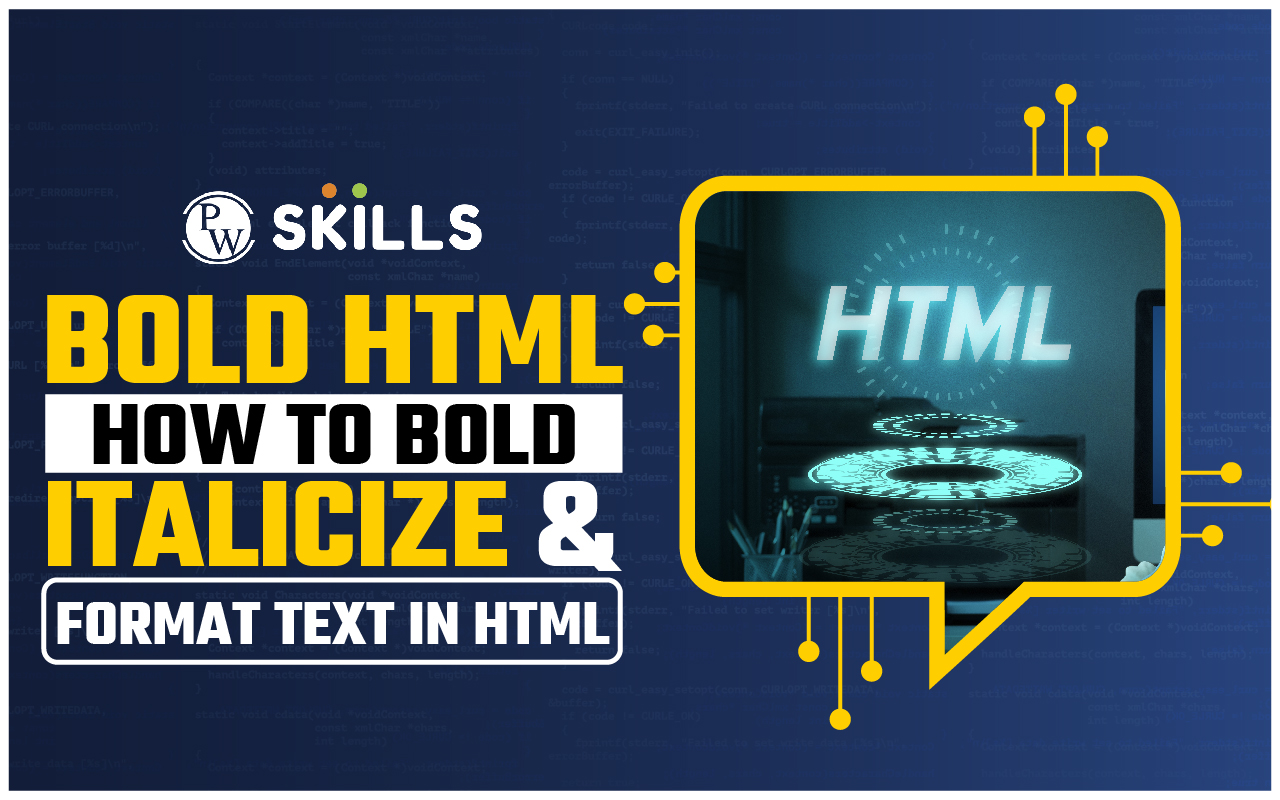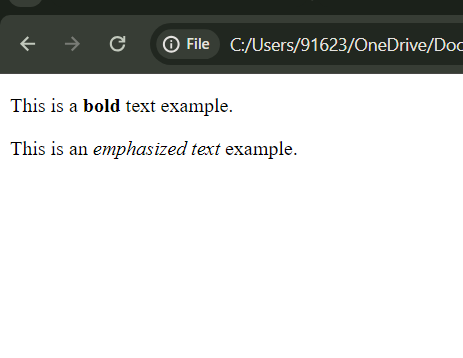Bold HTML: The Hypertext Markup Language (HTML) is used to define the structure or framework of a web page. It consists of many HTML tags to make elements of a web page impressive and dynamic. The bold HTML tag is among one of those important tags that are specifically used to make texts bold to draw extra user attention to them. There are different ways to use this tag in the HTML document. Let us read this article to learn how to use bold HTML tags in your HTML document.
Bold HTML Tag – Key Takeaways
- The <b> tag makes the text appear bold without adding any extra emphasis or importance to it.
- The text inside the <b> tag is displayed in bold in all browsers.
- Bold HTML is widely supported by all HTML versions and all modern web browsers.
- The <b> tag requires both an opening <b> and a closing </b> tag to wrap the content that should be bolded.
What is a bold HTML tag?
The bold HTML tag is a type of container tag that is used to make a text attractive and draw the attention of the reader. It basically increases the thickness of a text to make it look bold. It is very important when we need to highlight some particular information of great importance.
The bold HTML tag is represented with the help of <b> tag. It consists of a starting tag and an ending tag and between both of these tags, the content that needs to be made bold is written.
Bold HTML Tag: Features
The bold HTML tag, which is mainly represented by <b> is used to apply bold format to an HTML element. The main objective of <b> tag is to add a bold attribute to the text enclosed in it. It does not have any semantic meaning and is used for styling purposes only.
However, in most of the cases, the <strong> tag is preferred over the bold HTML tag to make an HTML element bold. This is because The <strong> tag consists of semantic importance which indicates that the text enclosed inside it, is of greater importance than the others.
Syntax Of Bold HTML Tag
Now, After understanding the basic meaning and features of the Bold HTML tag, let us understand it more clearly by learning about the basic syntax used for this tag.
So, a Bold HTML tag is a type of container tag that contains an opening and a closing tag, between these opening and closing tags there is a text written that is intended to be modified. The basic syntax of a bold HTML tag is given in the table below for your reference:
| Syntax Of Bold HTML Tag |
| <b>
Content that you want to make bold </b> |
Why <strong> tags are more preferred over <b> tags?
The sole purpose of the <b> tag is to highlight the enclosed text by making it bold, without adding any extra semantic meaning to the text.
The <strong> tag, on the other hand, not only makes the text bold but also conveys strong importance to the enclosed content. Different browsers can interpret bold content more accurately when using the `<strong>` tag.
While the <b> tag only adds visual appearance, it does not imply any additional importance to the text, <strong> text can be nested with the other HTML elements if required.
HTML Bold Tags Examples
Now that we understand the syntax of the Bold HTML Tag, it is equally important to learn how to implement it in your HTML document. To help you become more familiar with its usage, let us look at a simple example below. This will demonstrate how the <b> tag is used to make text bold in a webpage.
| Example Of Bold HTML Tag |
| <!DOCTYPE html>
<html> <head> <title>Title of the web page</title> </head> <body> <h1>Welcome to PW Skills</h1> <p> Learn <b>Web Development</b> with PW Skills. This is a platform, where you will find <b>well-written, well-explained, and well-framed</b> computer science articles. </p> </body> </html> |
| Output-
|
How to Italicize Text in HTML
To make text italic in HTML, you can use the <em> tag or the <i> tag. Both will make the text appear slanted, but the <em> tag shows that the text has more importance. Apart from this, You can also use CSS to italicize text by setting the font-style property to “italic”.
Similar to the <strong> and <b> tags, the <em> tag is preferred over the <i> tag because it has more importance in terms of how the text is understood. Let us understand the implementation of <em> tag and see how can we italicize text in HTML.
| HTML <em> Tag Example |
| <!DOCTYPE html>
<html> <head> <title>PW Skills Example of <em> and <b> Tags</title> </head> <body> <p>This is a <b>bold</b> text example.</p> <p>This is an <em>emphasized text</em> example.</p> </body> </html> |
| Output-
|
Learn Web Development with PW Skills
Join our Web Development Course to start your career as a full-stack web developer. This course at PW Skills will provide you with the best resources and learning experience to master web development using advanced tools and technologies.
The course offers industry-level expert classes, doubt-solving, exercises, quizzes, assessments, assignments, relevant industry projects, placement assistance and much more. Know everything about this course at at pwskills.com.
Body HTML FAQs
What is an HTML bold tag used for?
The bold HTML tag is used to make a text attractive and draw the attention of the reader. It basically increases the thickness of a text to make it look bold.
Which one to use, or tag?
<strong tag is preferred because it adds extra importance to the enclosed text and also can easily be interpreted by different browsers.
Is a bold HTML tag self-closing tag?
No bold HTML tag consists of a starting tag and ending tag. The text that needs to be highlighted is enclosed within <b tag.



